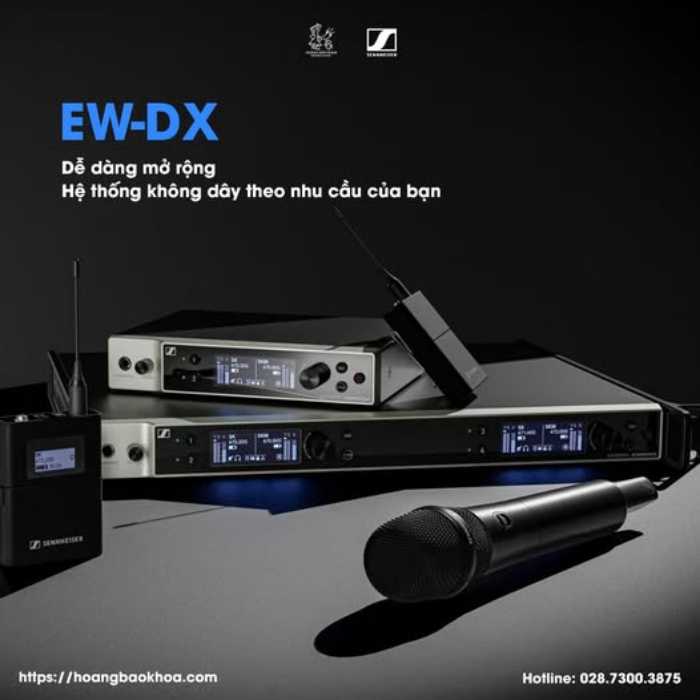Music and singing are not only sources of joy but also powerful ways to express emotions. Thanks to rapid advancements in audio technology, today’s microphones are equipped with cutting-edge features that provide both professional singers and karaoke enthusiasts with a more enjoyable and higher-quality experience.
Digital Wireless Microphones: Crystal-Clear Sound with No Interference
Digital wireless microphones are quickly becoming the new industry standard. By converting and encoding audio into a digital signal, these microphones deliver:
-
Stable transmission with minimal dropouts
-
Superior resistance to interference compared to analog systems
-
Clean, natural vocal reproduction without unwanted noise such as hissing or static
Example: Sennheiser EW-DX, one of the most advanced digital wireless microphone systems, widely trusted by event organizers, theaters, and performing artists.
Auto Frequency Scan: Hassle-Free Wireless Performance
One of the biggest challenges with traditional analog wireless microphones is frequency conflict, which often causes distortion or signal loss.
Modern microphones feature Auto Frequency Scan (AFS) technology, which automatically detects and locks onto the cleanest available frequency. This ensures stable operation even in environments filled with multiple wireless devices.
Auto Gain Control (AGC): Consistent Vocal Levels
For many singers, especially beginners, vocal volume can fluctuate-sometimes too strong, sometimes too weak.
With Auto Gain Control (AGC), the microphone automatically balances input levels, keeping vocals:
-
Clear and stable across high and low notes
-
Free from distortion or clipping
-
Audible even at softer passages
Feedback Suppression: Eliminate the Annoying Microphone Howl
Microphone feedback is one of the most frustrating issues in karaoke and live sound events.
Modern wireless microphones integrate Feedback Suppression Technology, which automatically detects and eliminates the frequencies that cause feedback. This gives singers:
Directional Microphone Design: Focus on Your Voice, Not the Noise
While not a brand-new concept, directional microphones (cardioid, supercardioid) have been continuously improved to deliver better results.
-
They capture the lead vocal from the front
-
They minimize background noise from other directions
-
Perfect for both home karaoke and professional stage use
Flexible Connectivity with Mobile Devices
Modern microphones are increasingly designed with smart connectivity in mind. Many models now support:
-
Bluetooth or USB connections
-
Direct pairing with smartphones, tablets, or livestream systems
-
Easy setup for online karaoke, recording, or live streaming
This allows users to create high-quality content or enjoy karaoke sessions with just a few simple STEPS.
Recommended Microphones to Consider
-
🎤 Sennheiser EW-DX - Premium digital wireless system with outstanding audio quality, perfect for live stages and professional conferences.

-
🎤 Sennheiser XSW 1-835 - User-friendly wireless microphone with clear sound, ideal for karaoke and semi-professional performances.
-
🎤 BaoMic BM-222B / BM-704K - Reliable and cost-effective microphones designed for conferences and karaoke.
-
🎤 Fulinda KT-521 - Gooseneck conference microphone for meetings, ensuring clear and professional speech delivery.
Conclusion
Microphone technology has come a long way-improving sound quality, ease of use, and performance reliability.
Whether you’re a beginner singing karaoke at home or a professional performer on stage, choosing the right microphone with the right technologies will give you a remarkable singing experience worth every investment.